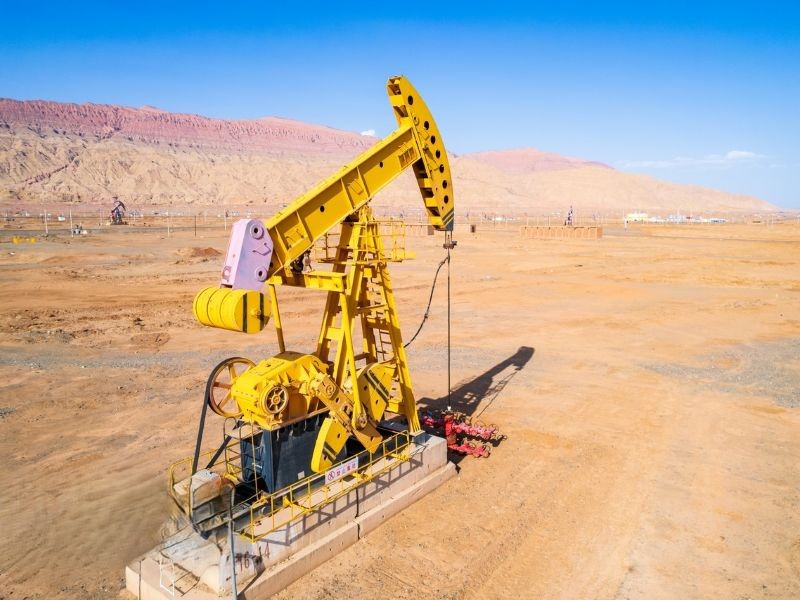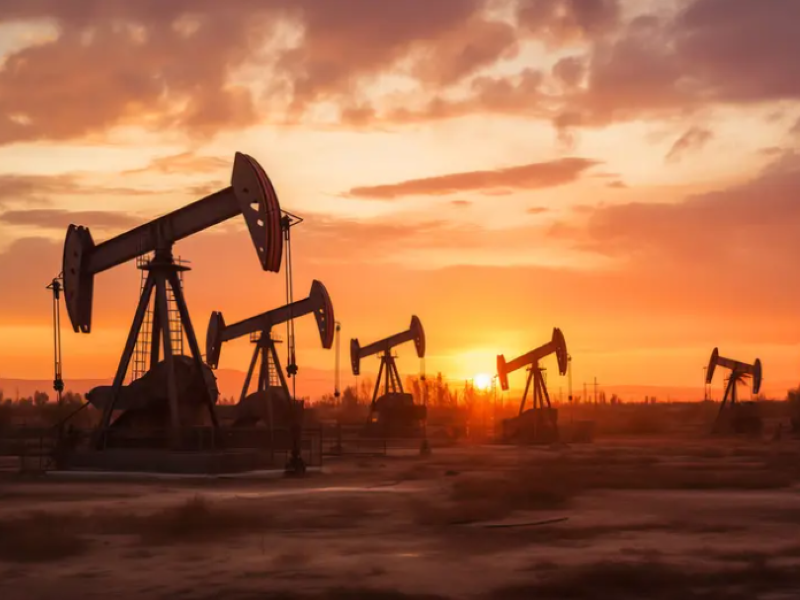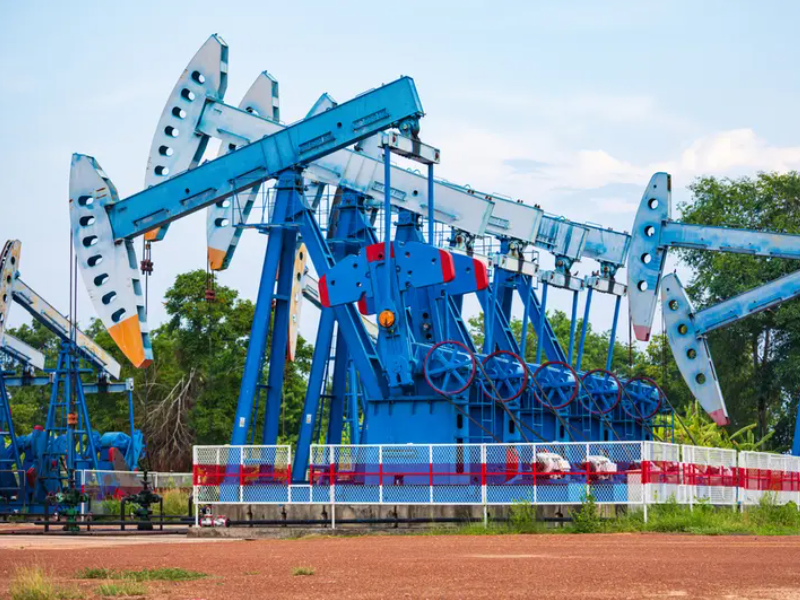In oil extraction operations, deep well pump oil recovery equipment is the core equipment to open up the underground crude oil delivery channel to the ground, and the beam—type sucker rod pump-sucker rod pump device, with its excellent reliability and strong environmental adaptability, occupies an important position in various types of oil recovery equipment and has become one of the most widely used types. In the operation system of this oil recovery device, the pumping unit, the pumping rod, and the sucker rod pump play a central role. The three closely cooperate to form a “three pumping equipment” collaborative system, which participates in every link from underground crude oil extraction to ground transportation. It can be said that the performance level of these three and the efficiency of cooperation with each other are directly related to the final output of the oil well, and at the same time it also plays a decisive role in the economic cost control in the mining process.
The sucker rod pump (also known as the deep well pump) is the downhole actuator of the “three pumping equipment”. It is located at a certain depth below the dynamic liquid level in the well shaft (usually 50-100m below the dynamic liquid level). It relies on the power transmitted by the sucker rod to achieve crude oil extraction. It is a key component that determines the actual output of the oil well.


Ⅰ. Classification:
The classification of sucker rod pumps is based on the underground installation method as the core basis, and it is mainly divided into two categories: tubular pumps and rod pumps. The two differ significantly in structure, displacement, and application scenarios, and need to be selected according to the conditions of the oil well.
1. Tubular pump: The pump barrel of the tubular pump is connected to the tubing by a thread, and the whole goes down into the well. The structure is simple, the pump diameter is large (usually 56-114mm), the displacement is high (single-stroke displacement can reach 50-200L), and the manufacturing cost is low and the maintenance cost is low.Its advantage is to adapt to high-yield oil wells. At the same time, because the inner wall of the pump cylinder is smooth and the flow channel is unobstructed, it is suitable for oil wells with more sand and less gas.However, the pump inspection operation of the tubular pump requires all the oil pipes to be removed, and the operation cycle is long, so it is more suitable for the working conditions of shallow oil wells, stable output and low failure rate.
2. Rod pump: The pump body of the rod pump is connected to the sucker rod, and the sucker rod goes down into the well, and the pump inspection operation can be completed without starting the oil outlet pipe (the operation cycle only takes 8-12 hours), and the pump inspection efficiency is high.However, its pump diameter is small and its displacement is low. It is suitable for deep or ultra-deep wells with low output and large well depth, as well as oil wells with severe waxing and frequent pump inspections.
Ⅱ. Working principle:
The working process of the sucker rod pump is based on the principle of ”negative pressure suction and positive pressure discharge", and the continuous extraction of crude oil is achieved through the reciprocating movement of the piston. A complete working cycle (one stroke) includes two stages of inhalation and discharge.:
1. Suction stage: When the pumping unit drives the pumping rod upward, the piston rises synchronously, the volume in the pump cylinder increases, the pressure decreases, and a negative pressure is formed.At this time, the downhole crude oil opens the suction valve (fixed valve) of the pump under the action of underground pressure, enters the pump cylinder, and completes the crude oil inhalation.;
2. Discharge stage: When the sucker rod drives the piston to move downwards, the piston squeezes the crude oil in the pump cylinder, causing the pressure in the pump cylinder to increase, the suction valve is closed, the discharge valve (swimming valve) is opened, and the crude oil enters the oil pipe through the discharge valve. The crude oil column in the oil pipe is transported upward to the ground.
In an ideal state, the theoretical displacement of the sucker rod pump can be calculated by the formula: the theoretical displacement Q=π×(D/2) 2×S×n×60 (where D is the pump diameter, S is the stroke, and n is the stroke). However, in actual production, affected by a variety of factors, the actual liquid production of the oil well is much lower than the theoretical displacement. The ratio of the two is “pump efficiency” (η=actual liquid production/theoretical displacement×100%). Pump efficiency is the core index to measure the efficiency of the sucker rod pump, and it is also an important assessment parameter for oilfield production management.
Ⅲ. Factors affecting pump efficiency:
The pump efficiency of the sucker rod pump is affected by many factors such as geological conditions, equipment quality, and working parameters. Targeted measures need to be taken to improve the pump efficiency. Common influencing factors include:
1.Geological factors: This is the core external factor that affects the efficiency of the pump.The sand output from the oil well will wear the pump cylinder and piston, causing the pump to leak; the influence of gas will cause the crude oil in the pump cylinder to “air lock”, reducing the effective pumping volume; the oil well wax will clog the pump valve and flow channel, increasing the pumping resistance; the high viscosity of crude oil will reduce the fluidity of crude oil and increase the difficulty of pumping; the corrosive water and gas in crude oil will corrode the pump body components and shorten the service life.
2.Equipment manufacturing and installation quality: the mating gap between the pump cylinder and the piston is too large, resulting in crude oil leakage; wear or deformation of the sealing surface of the pump valve will affect the sealing; the tilt of the pump body during installation will increase the friction between the piston and the pump cylinder, reducing the pump efficiency.
3.Selection of working parameters: the stroke is too small, which will lead to insufficient single pumping volume; the stroke is too high, which will cause the crude oil to be “too late to inhale” in the pump cylinder, forming an “air pump”; The pump hanging depth is improper (too shallow will cause the pump to not go down below the moving liquid level, and too deep will increase the load on the sucker rod) will also affect the pump efficiency.

Reference materials:
[1] "Natural Gas Industry" Volume 43, Issue 5, 2023 "Application and Optimization of Rod Pumps in Deep Shale Oil Wells"
[2] "Petroleum Mechanical Engineering" 2022, Volume 3, Issue 2, "Working Principle and Flow Field Simulation Analysis of Sucker Rod Pump".
[3] "Oil and Gas Field Development Engineering" Volume 8, Issue 3, 2023 "Research on Influencing Factors and Improvement Measures of Sucker Rod Pump Efficiency"
[4] "Oilfield Chemistry" 2022, Volume 39, Issue 2, "The Mechanism of the Influence of Geological Factors of Oil Wells on the Efficiency of Sucker Rod Pump"
[5] "Petroleum Engineering Construction" Volume 49, Issue 1, 2023 "Pump Working Parameter Optimization and Pump Efficiency Improvement Practice"

